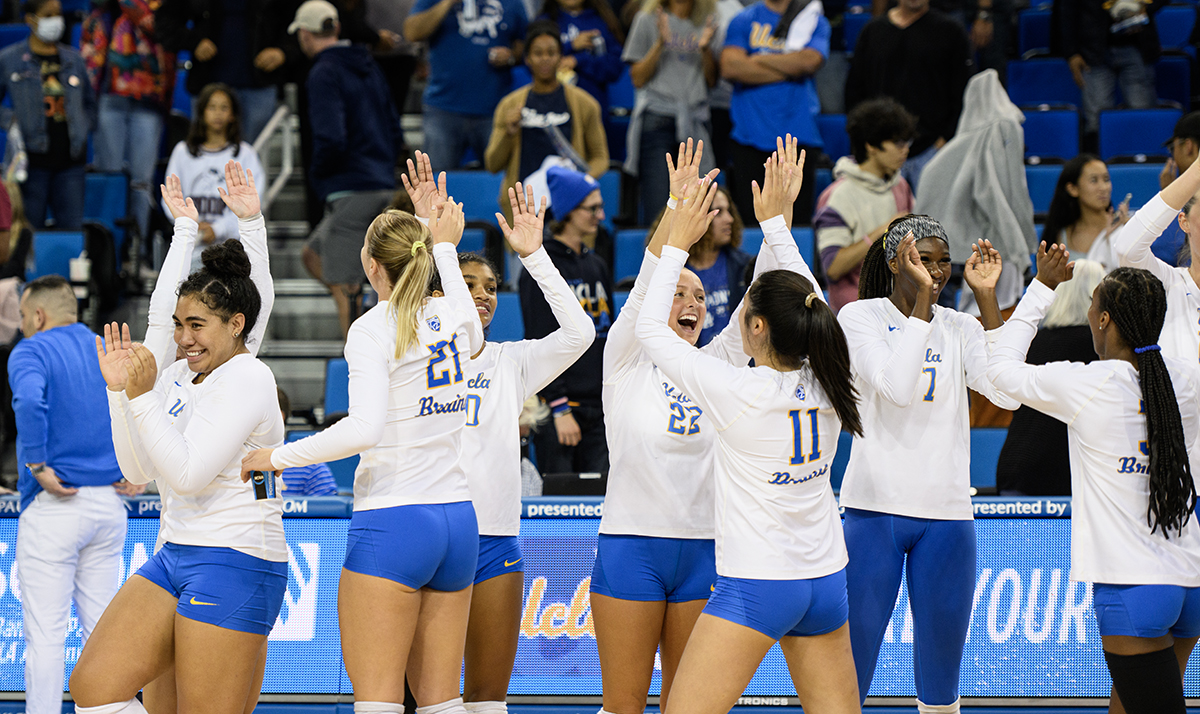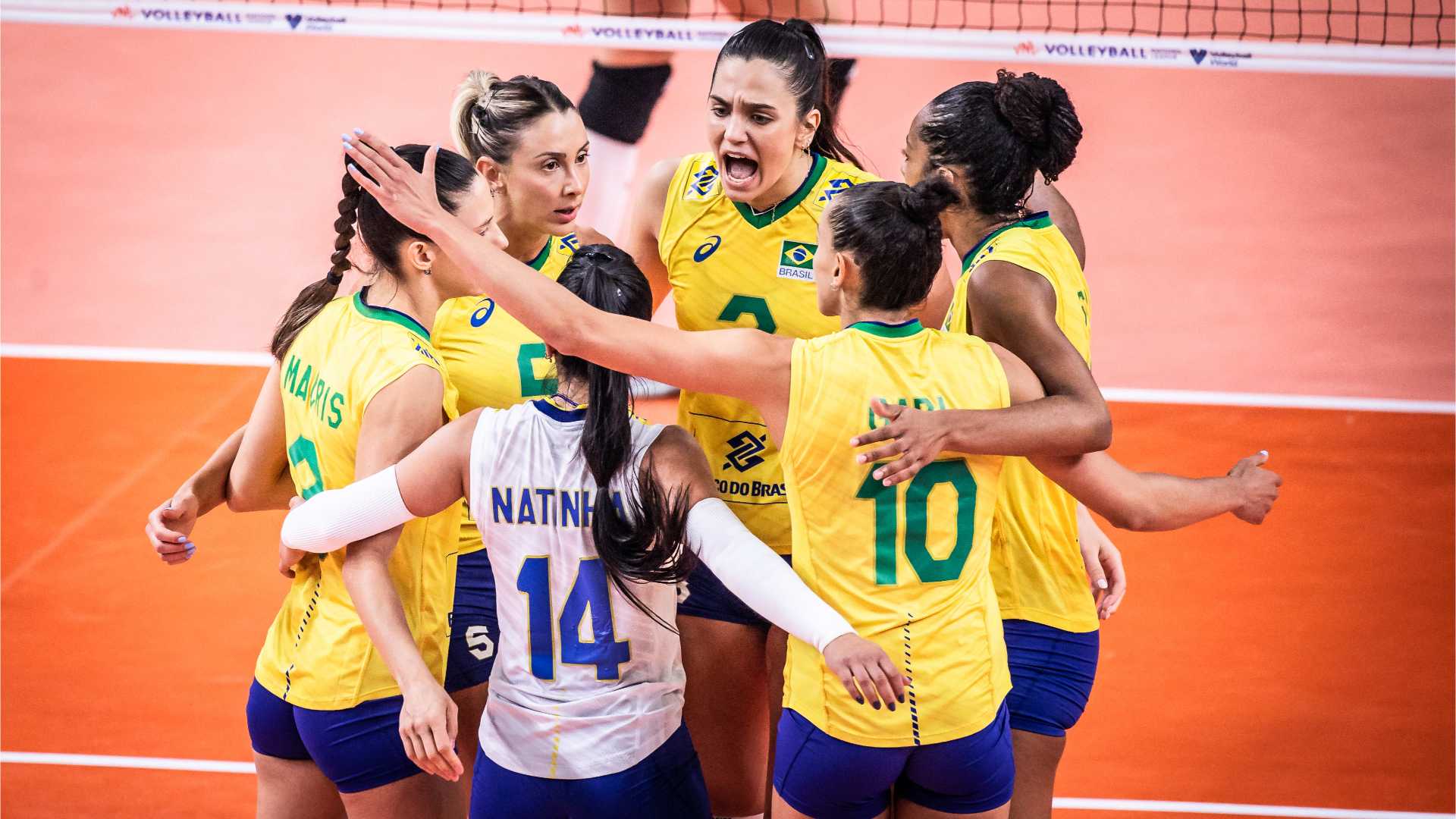Rules and Gameplay of Women’s Volleyball

Women’s volleyball is a dynamic and exciting sport that requires a combination of athleticism, strategy, and teamwork. It is played by two teams of six players each on a rectangular court divided by a net. The objective of the game is to score points by grounding the ball on the opponent’s court while following the rules of the game.
Scoring
Points are scored when a team successfully grounds the ball on the opponent’s court or when the opposing team commits a fault. A fault can be committed in various ways, including:
- Hitting the ball out of bounds.
- Failing to return the ball over the net within three hits.
- Touching the net with any part of the body.
- Stepping over the center line into the opponent’s court.
- Hitting the ball twice in a row.
The first team to reach 25 points with a two-point lead wins the set. A match consists of three or five sets depending on the competition format.
Rotations
Volleyball players rotate positions in a clockwise direction after each point. This ensures that all players have an opportunity to play in all positions on the court. The rotation system is crucial for team strategy and allows players to develop skills in different positions. The player serving the ball is always in the back right position. This rotation system helps ensure a balanced team, promoting fair play and strategic depth.
Types of Plays
Volleyball games are filled with a variety of plays, each requiring different skills and strategies. Some common plays include:
- Attack: This is the most common play in volleyball, where a player hits the ball over the net with force to ground it on the opponent’s court. Different types of attacks include the spike, the tip, and the dink.
- Block: This is a defensive play where players jump at the net to attempt to stop the opponent’s attack. Blocks can be single or double, depending on the number of players involved.
- Serve: This is the initial play of each point, where a player hits the ball over the net to start the rally. Different types of serves include the underhand serve, the overhand serve, and the jump serve.
- Pass: This is a defensive play where a player receives the opponent’s serve or attack and directs it to a teammate. Passes are typically made with a forearm pass or a dig.
- Set: This is an offensive play where a player sets the ball up for a teammate to attack. The set is typically made with a bump or a hand set.
Skills Required in Women’s Volleyball
Volleyball requires a wide range of skills, including:
- Serving: Serving is the first play of every point and involves hitting the ball over the net to start the rally. A good serve is crucial for putting pressure on the opponent’s receiving team.
- Passing: Passing is a defensive skill that involves receiving the opponent’s serve or attack and directing it to a teammate. A good pass is essential for setting up the offense and controlling the flow of the game.
- Setting: Setting is an offensive skill that involves setting the ball up for a teammate to attack. A good set is crucial for creating scoring opportunities and maximizing the effectiveness of the attack.
- Hitting: Hitting is an offensive skill that involves attacking the ball with force to ground it on the opponent’s court. A good hit is essential for scoring points and putting pressure on the opponent’s defense.
- Blocking: Blocking is a defensive skill that involves jumping at the net to attempt to stop the opponent’s attack. A good block can prevent the opponent from scoring and can also be used to disrupt the opponent’s attack.
Strategies and Tactics in Women’s Volleyball
Volleyball is a strategic sport that requires teams to develop effective offensive and defensive formations.
- Offensive Formations: Offensive formations are designed to maximize scoring opportunities by creating mismatches and exploiting weaknesses in the opponent’s defense. Common offensive formations include the 4-2 offense and the 6-2 offense. The 4-2 offense involves four hitters and two setters, while the 6-2 offense involves six hitters and two setters.
- Defensive Formations: Defensive formations are designed to prevent the opponent from scoring by disrupting the opponent’s attack and covering the court effectively. Common defensive formations include the 5-1 defense and the 6-2 defense. The 5-1 defense involves five defenders and one libero, while the 6-2 defense involves six defenders and two liberos.
Notable Players and Teams in Women’s Volleyball

Women’s volleyball has witnessed the rise of exceptional athletes who have shaped the sport’s history and left an indelible mark on its evolution. This section will delve into the most prominent players and teams, exploring their achievements, playing styles, and contributions to the global volleyball landscape.
Legendary Players
The sport has seen many legendary players who have set new standards of excellence and inspired generations of volleyball enthusiasts.
- Lang Ping (China): Considered one of the greatest volleyball players of all time, Lang Ping’s dominance as an athlete and her subsequent success as a coach have solidified her legacy. She led the Chinese national team to three Olympic gold medals (1984, 2016, 2020) and was instrumental in revolutionizing the sport’s tactics and techniques. Her signature “iron hammer” spike remains a symbol of power and precision in volleyball.
- Regla Torres (Cuba): A formidable force on the court, Regla Torres was known for her exceptional blocking and offensive prowess. She led Cuba to three Olympic gold medals (1992, 1996, 2000) and is considered one of the most dominant blockers in volleyball history.
- Misty May-Treanor (USA): Alongside her partner Kerri Walsh Jennings, Misty May-Treanor dominated beach volleyball for over a decade, winning three Olympic gold medals (2004, 2008, 2012). Their unmatched athleticism, strategic brilliance, and dynamic playing style transformed the sport and inspired a new generation of beach volleyball players.
- Foluke Akinradewo (USA): A versatile player with exceptional athleticism and blocking skills, Foluke Akinradewo was a key member of the US women’s national team that won Olympic gold in 2012 and bronze in 2016. Her leadership on and off the court has earned her respect and admiration from her peers.
- Kim Yeon-koung (South Korea): Widely regarded as one of the best attackers in the world, Kim Yeon-koung’s powerful spikes and exceptional versatility have made her a force to be reckoned with. She has led South Korea to numerous international victories, including the 2014 World Championship.
Most Successful Teams
The global volleyball landscape is marked by a handful of teams that have consistently dominated the international stage.
- USA: The US women’s national team has been a powerhouse in international volleyball, winning numerous Olympic medals, World Championships, and World Cups. Their consistent success is attributed to their strong team chemistry, exceptional athleticism, and a versatile offensive style.
- China: China’s dominance in women’s volleyball has been a testament to their strong training programs and consistent talent pool. Their success is marked by a strong defense, disciplined play, and a balanced offensive attack.
- Brazil: Brazil has consistently been a top contender in women’s volleyball, known for their dynamic playing style, aggressive serves, and a powerful offensive attack. They have won numerous Olympic medals and World Championships.
- Russia: Russia has a long and illustrious history in women’s volleyball, with a strong tradition of technical excellence and tactical sophistication. Their consistent success is attributed to their strong defense, well-coordinated attacks, and a focus on team play.
- Italy: Italy has emerged as a force in women’s volleyball in recent years, known for their technical prowess, strategic brilliance, and a strong emphasis on team play. Their consistent success is attributed to their well-structured training programs and a focus on developing young talent.
Current Top Players
The current generation of women’s volleyball players is filled with exceptional athletes who are pushing the boundaries of the sport.
- Jordan Larson (USA): A veteran player with exceptional attacking skills and a strong presence on the court, Jordan Larson is a key member of the US women’s national team. Her leadership and experience have been instrumental in their recent successes.
- Zhu Ting (China): A powerful attacker with exceptional height and reach, Zhu Ting is considered one of the best players in the world. Her ability to dominate the net and her versatility have made her a force to be reckoned with.
- Tijana Boskovic (Serbia): Known for her powerful spikes and exceptional accuracy, Tijana Boskovic is a dominant force on the court. Her ability to score points from any position has made her a key player for Serbia.
- Paola Egonu (Italy): A rising star in women’s volleyball, Paola Egonu is a powerful attacker with exceptional athleticism and a strong presence on the court. Her dominance in the attacking line has made her a key player for Italy.
- Gabriela Guimarães (Brazil): A versatile player with exceptional attacking skills and a strong presence on the court, Gabriela Guimarães is a key member of the Brazilian women’s national team. Her ability to score points from any position has made her a force to be reckoned with.
Current Top Teams
The global volleyball landscape is constantly evolving, with new teams emerging and established teams maintaining their dominance.
- USA: The US women’s national team remains a powerhouse, consistently challenging for top honors in major international tournaments. Their strong team chemistry, exceptional athleticism, and a versatile offensive style continue to make them a force to be reckoned with.
- Serbia: Serbia has emerged as a strong contender in recent years, consistently reaching the later stages of major tournaments. Their strong defense, well-coordinated attacks, and a focus on team play have made them a formidable opponent.
- Brazil: Brazil continues to be a top contender, known for their dynamic playing style, aggressive serves, and a powerful offensive attack. They remain a threat to win any tournament they participate in.
- Italy: Italy has continued to rise in the ranks, consistently challenging for top honors in major tournaments. Their technical prowess, strategic brilliance, and a strong emphasis on team play have made them a formidable opponent.
- China: China remains a force to be reckoned with, consistently reaching the later stages of major tournaments. Their strong defense, disciplined play, and a balanced offensive attack make them a challenging opponent for any team.
Women’s volleyball is a dynamic sport that demands agility, teamwork, and a strategic mind. The thrill of the spike, the precision of the set, and the intensity of the block all contribute to the captivating nature of the game.
Just as a skilled player needs a comfortable and supportive environment, so too does a coach need a well-appointed space for planning and strategizing. A chair and a half navy blue could provide the perfect balance of comfort and style for a coach’s office, allowing them to focus on guiding their team to victory.
Women’s volleyball is a captivating sport that demands incredible athleticism, teamwork, and strategic prowess. The pinnacle of this sport is undoubtedly the Olympics, and the women’s volleyball Olympics 2024 promises to be an electrifying spectacle. With the world’s best players competing for glory, we can expect fierce competition, breathtaking rallies, and unforgettable moments that will define the future of women’s volleyball.